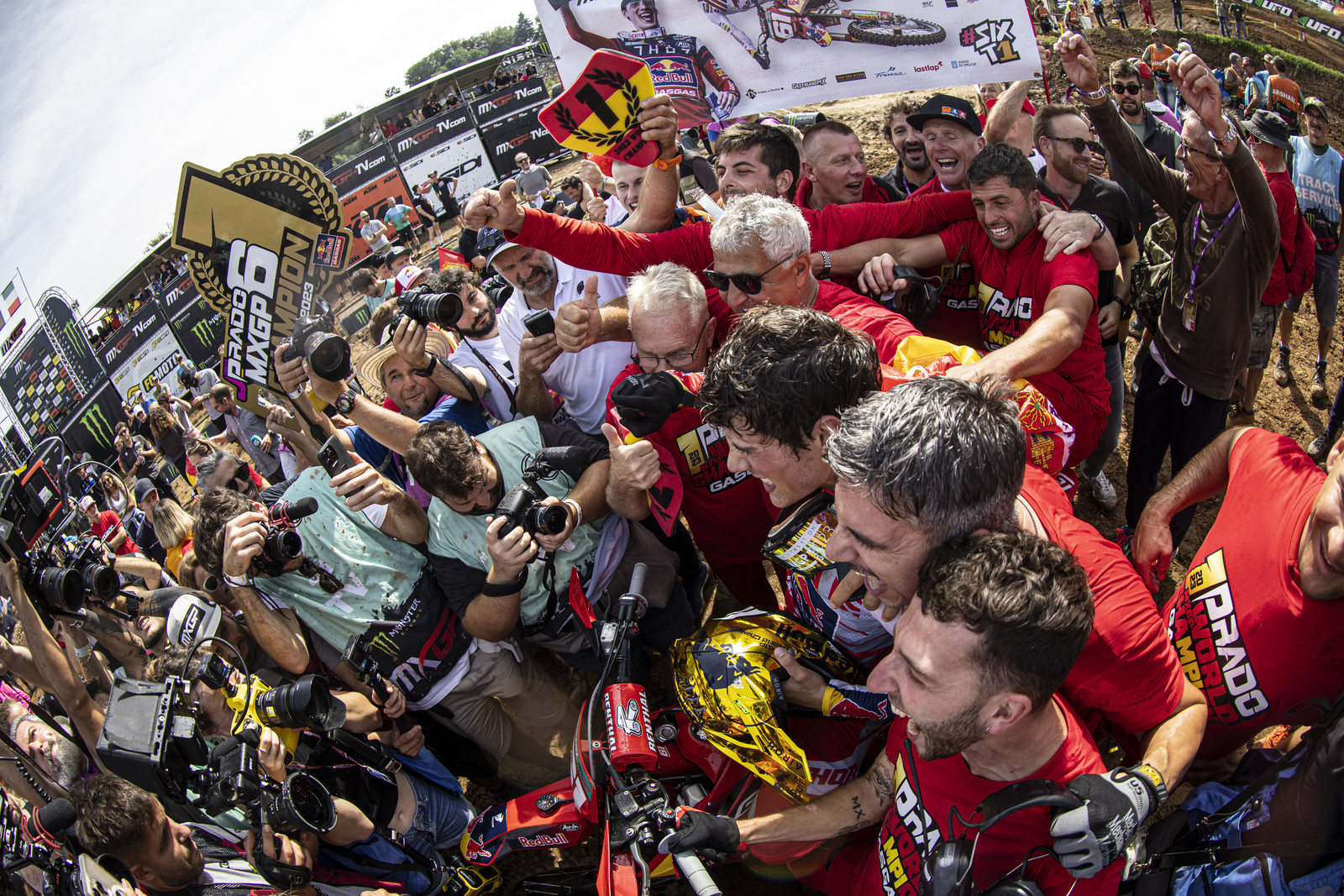The different nationalities add a fascinating layer to the FIM Motocross World Championship, and such a subject matter is particularly relevant when highlighting the current dynamic in each class. Jorge Prado of Spain has just won the premier MXGP crown, for instance, and the triumph was just as much of a landmark for the nation as it was for the rider.
Spain is the largest country in Southern Europe and a location that thousands of professional riders have exploited for pre-season preparation. So many associate Spain with the pinnacle of the sport, considering that it is such a hive of activity, and yet they have been starved of success. The inordinate number of titles that the nation has acquired in alternative forms of two-wheeled motorsport cause the lack of motocross success to go unnoticed.
Prado has contributed two MX2 titles to their championship tally, of course, but those are the only number one plates of note that have returned to Europe's Iberian Peninsula. There has been a sprinkling of bronze medals (Javier Garcia Vico in 2002's 500cc campaign, Jose Butron in MX2 in 2014 and Prado last season). Perhaps most shocking is the fact that Jonathan Barragan doesn't feature on the list – he was undoubtedly Spain's brightest athlete before Prado entered the fray and yet he never captured an end ranking of great significance.
Barragan was fourth in the MX1 championship in 2008, fifty-four points adrift of gold, and leapt onto the top step of the Grand Prix podium on six occasions (those came in 2008 and 2009). It was thought that he would go onto great things, but injuries and an ill-timed move to Kawasaki caused his career to screech to a premature halt. Spain never had more than one international superstar at one time. Even that is quite a striking statement, as is the fact that the nation was without a podium from August 25, 2013, to August 28, 2016.

The good news for Spanish fans is that the seasons where success was sparse are firmly in the rear-view mirror. Ruben Fernandez is proving to be a formidable contender in the MXGP class, then there are many rising stars in the 250F divisions. Spain will be a force for years to come and, hey, a Motocross of Nations victory is a realistic ambition. A remarkable turnaround for a nation that struggled for relevance for many years and proof that these things go in ebbs and flows. Great Britain is a perfect example of that. Oh, and Italy.
This scribe still remembers being sat in the press room in 2017, when Antonio Cairoli boldly claimed that there would be little Italian success to speak of in the future. Cairoli was not incorrect. Athletes like Andrea Adamo, Alberto Forato and Mattia Guadagnini had acquired little attention at that point. The active Italian riders in the MX2 division, like Michele Cervellin and Morgan Lesiardo, had already proven that there was no reason to be excited about their prospects. It was hard to imagine a scenario in which there would be another Italian world champion.
Even the most passionate Italian fans were frightened to imagine a world in which Cairoli was not on track and yet, less than two years since his last Grand Prix, the nation has crowned another champion. It appears that the future is bright for Team Italy. Who would have been brave enough to predict that around 2019? It is an ever-changing landscape and one that even the most intelligent industry figureheads struggle to stay atop of. No one anticipated that Belgian riders like Liam Everts and Lucas Coenen would help return that nation to its former glory, for instance.
This is valuable context that'll make the FIM Motocross World Championship even more exciting to follow. The next geographical storyline to jump to the forefront will be the emergence of nations like Latvia and Norway – Northern Europe's seemingly set to overtake some of the locations in Western Europe that have ruled the roost for so long.



